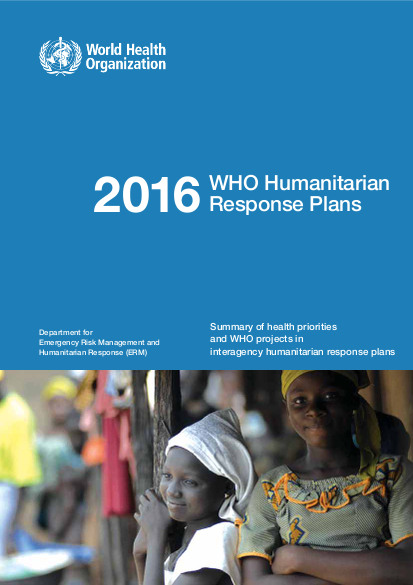
In 2016 over 125 million people living in crisis-affected countries are in need of humanitarian assistance. The humanitarian community is committed to providing aid to over 87 million of those in need. The risks to health posed by humanitarian emergencies are at an all-time high. Developments such as climate change, urbanization, population growth and worsening civil conflict are increasing the frequency and severity of many types of emergencies. Attacks on health workers and health facilities are also on the rise.
This document describes how WHO and its Health Cluster partners plan to meet health needs in countries, territories and regions facing protracted emergencies in 2016. Collectively, health sector partners are appealing for US$ 1.6 billion to provide assistance. Of that amount, WHO requires US$481 million. Health interventions under the Humanitarian Response Plans address issues such as the spread of infectious diseases, the lack of medicines and health services and rising rates of acute malnutrition. The number of people affected, and their health needs, are likely to rise throughout the year as new acute crises occur.
In addition to the protracted emergencies featured in this document, the Organization and its partners are responding to sudden onset emergencies such as Cyclone Winston that hit Fiji in February 2016, or epidemics such as the Zika virus in Brazil, the remaining cases of Ebola in West Africa and a severe outbreak of yellow fever in Angola that started in December 2015.
